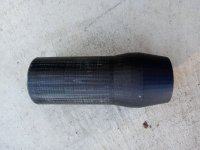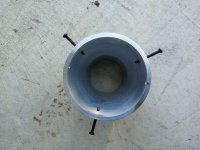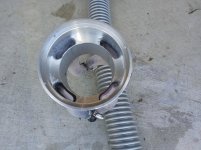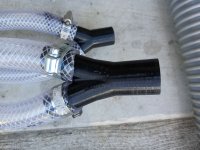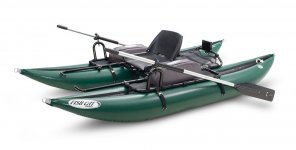Recently I have been working on a project, and have decided to share the results with the forum as it happened to be this forum that inspired my initial ideas.
Project Goals:
-Noise: Create a dredging system that is quiet
-Efficiency: Do as much as possible as far as moving material, with as little input energy ass possible
-Performance: Sacrifice as little as possible in the ways of performance in comparison to a 'real' gas powered dredge
Project Results:
Suction will be provided by an 'infinity jet' aka 'Couples Jet'. Sluice box will be submerged. Both of these design options will increase efficiency, as energy will not be lost to 'lift' material above the water line. In fact there should be little lifting involved, as the sluice box and nozzle will be at roughly the same height. Pressurized water will be provided via submersible electric pumps.
With these design choices the noise level will be that of the generator alone, and generators are pretty darn quite these days. The only sign of dredging, once the system is in place, is an extension cord running into the water. Otherwise there is only the compressed air line for the hookah.
Project Goals:
-Noise: Create a dredging system that is quiet
-Efficiency: Do as much as possible as far as moving material, with as little input energy ass possible
-Performance: Sacrifice as little as possible in the ways of performance in comparison to a 'real' gas powered dredge
Project Results:
Suction will be provided by an 'infinity jet' aka 'Couples Jet'. Sluice box will be submerged. Both of these design options will increase efficiency, as energy will not be lost to 'lift' material above the water line. In fact there should be little lifting involved, as the sluice box and nozzle will be at roughly the same height. Pressurized water will be provided via submersible electric pumps.
With these design choices the noise level will be that of the generator alone, and generators are pretty darn quite these days. The only sign of dredging, once the system is in place, is an extension cord running into the water. Otherwise there is only the compressed air line for the hookah.


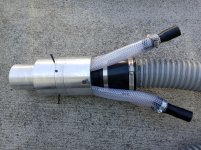
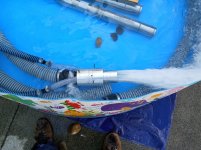

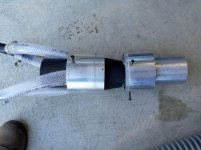
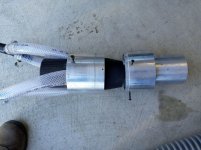
 Several years back I was building a 5 inch subbie similar to your's BUT old age and a wore out buddy changed my mind !
Several years back I was building a 5 inch subbie similar to your's BUT old age and a wore out buddy changed my mind !